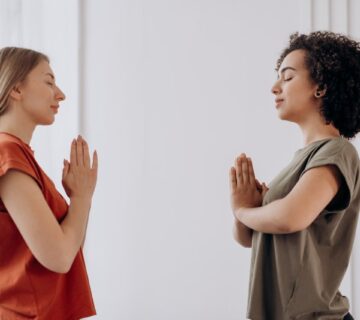In a world of screens and schedules, where childhood seems to rush by in a blur of beeps and buzzes, it’s more important than ever to give kids the tools they need to find their center, build resilience, and connect with their bodies. Enter the humble kids yoga mat not just a colorful rectangle for grown-ups anymore, but a powerful portal to a world of growth, fun, and well-being for children of all ages.
So, roll out the welcome mat (pun intended!) and let’s explore the top 5 reasons why every kid should have their own personal space for mindful movement and inner exploration:
1. Building Strong Bodies, Happy Minds:
Forget push-ups and sit-ups; yoga poses, or asanas, are an engaging and accessible way for kids to build strength, flexibility, and coordination. From playful downward-facing dogs to giggling tree poses, yoga offers a non-competitive framework for developing physical skills without stressing about performance. Balance, core strength, and spatial awareness all get a boost, leading to better posture, reduced clumsiness, and a newfound sense of confidence in one’s own body.
But yoga isn’t just about the muscles. The rhythmic flow of breath and movement in yoga helps to regulate the nervous system, calming restless minds and promoting emotional well-being. In a world filled with distractions and anxieties, the ability to focus and find inner peace is a priceless gift, and yoga equips kids with the tools to navigate their emotions with greater awareness and control.
2. Fostering Focus and Resilience:
Attention spans shorter than goldfish? Yoga to the rescue! Holding a pose requires concentration, as does quieting the mind and tuning into the breath. With regular practice, kids develop the ability to focus their attention, block out distractions, and approach tasks with greater perseverance. This newfound focus spills over into other areas of life, improving academic performance, enhancing social interactions, and building the resilience needed to overcome challenges.
Yoga also teaches kids how to navigate frustration and discomfort. Holding a challenging pose for a few breaths might be tough, but with each attempt, they learn the value of perseverance and self-compassion. This resilience translates into a more positive outlook on life, helping kids bounce back from setbacks and approach challenges with a “try again” mindset.
3. Igniting Creativity and Imagination:
Yoga is more than just poses; it’s a playground for the imagination. From soaring like an eagle in Warrior III to becoming a majestic tree in Mountain Pose, yoga invites kids to tap into their inner creativity and explore the world through movement. This playful exploration fosters self-expression, problem-solving skills, and a love for learning that extends beyond the classroom.
Storytelling yoga sequences, where poses become characters and movements tell a tale, add another layer of fun and engagement. Imagine transforming into a mischievous monkey swinging through the jungle or a brave knight battling a fire-breathing dragon – the possibilities are endless! This playful approach to mindfulness makes yoga accessible and enjoyable for even the most restless young minds.
4. Cultivating Connection and Community:
Yoga is a practice that can be shared, creating opportunities for bonding and connection. Family yoga sessions can become a cherished ritual, bringing parents and children closer through shared laughter and mindful moments. In classrooms or community centers, group yoga classes foster a sense of belonging and acceptance, reminding kids that they’re not alone in their journey to well-being.
For shy or anxious children, group yoga can be a safe space to connect with others without the pressure of social interactions. The shared breathing and movement create a sense of unity, allowing kids to express themselves nonverbally and build friendships based on mutual respect and understanding
5. Planting the Seeds of Self-Awareness:
Perhaps the most valuable gift yoga offers kids is the chance to connect with their inner selves. Through mindful movement and focused breathing, children learn to listen to their bodies, tune into their emotions, and recognize their unique needs. This self-awareness empowers them to make healthy choices, build self-esteem, and navigate life with greater confidence and clarity.
As kids practice yoga, they develop a sense of inner peace and self- acceptance. They learn that mistakes are opportunities to learn, that challenges can be overcome, and that their breath is a constant companion, guiding them through life’s ups and downs. This self-awareness is a treasure they’ll carry with them throughout their lives, shaping


No comment